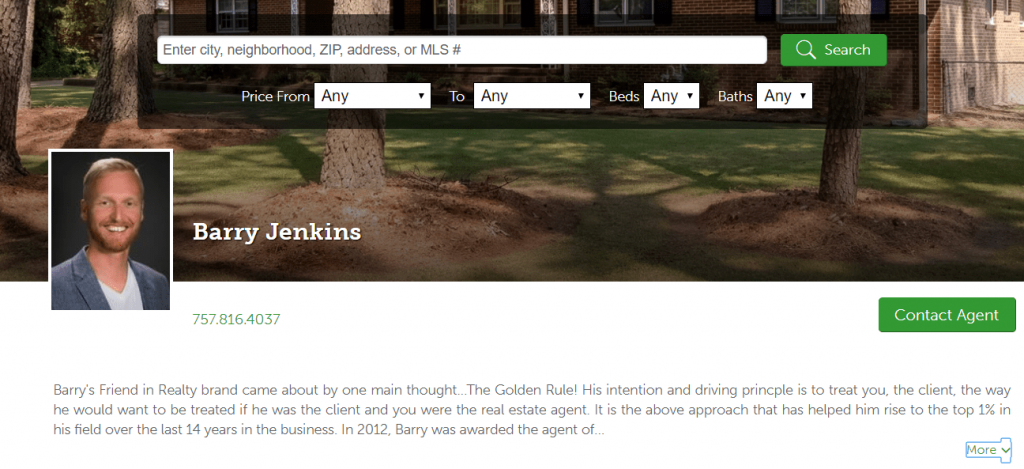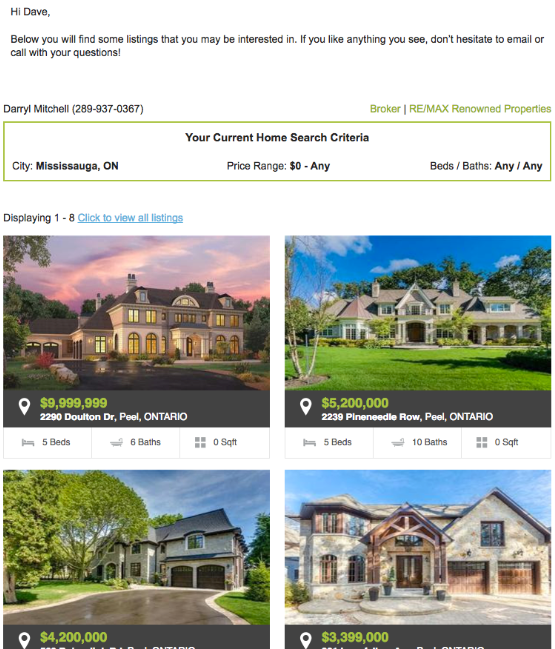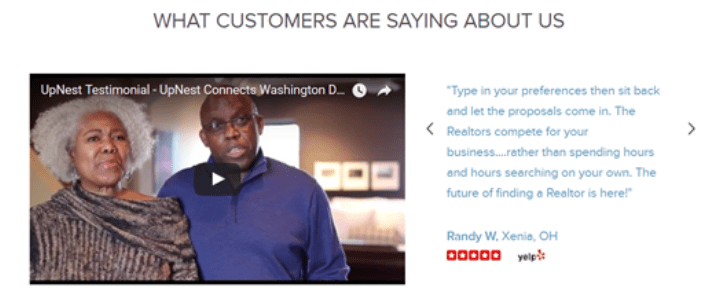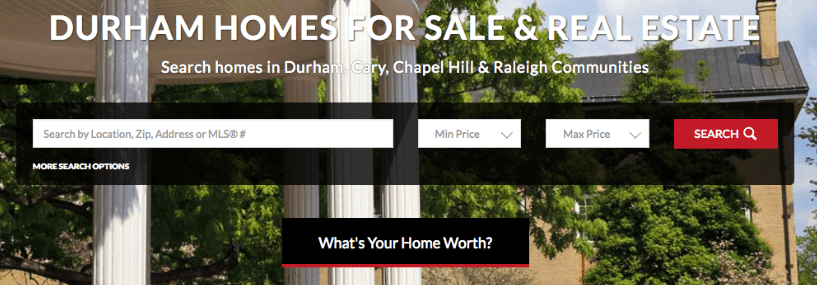At this stage, we can all agree property listings are the foundation of any real estate business.
As a matter of fact, according to a report from The National Association of Realtors (NAR), 49% of all real estate buyers first discovered the home they purchased online.
NAR also points out that 70% of buyers and 74% of sellers work with the first agent they contact. This makes it pretty straight-forward: you need to convince online visitors they should work with you, and you need to do it fast.
Today, it’s easier than ever for agents to show off listings on their sites using IDX, which also makes it easier than ever for potential homebuyers to find the properties that fit their needs using customizable search and filter functions (or move to another agent’s site if they don’t find what they’re looking for on yours).
Here are some simple ways to make the most of every IDX lead who crosses your path.
What Are IDX and MLS?
First, let’s brush up on exactly what IDX and MLS leads are.
What is IDX? IDX stands for the International Data Exchange, a system that enables real estate agents to show MLS property listings on their websites.
What is MLS? MLS stands for Multiple Listing Service, a method by which real estate agents share information about properties and cooperate on transactions for compensation.
In a nutshell, IDX systems are what allows MLS properties to be displayed on real estate agent websites. IDX helps potential customers search on all the most popular property criteria, as well as locate properties on maps and compare to similar properties nearby.
In other words, IDX offers a deep insight into the kind of property a potential client is interested in.
If you want to capture those leads and eventually convert them into lifetime customers, your website, content, and blog efforts must align with that purpose.
Leveraging IDX Leads: Strategies That Work
Obviously, the first place to start making your impression on IDX leads is your website. Make sure you include plenty of relevant info for homebuyers and browsers.
Consider extra navigation features like:
1. A standout bio
Forget the fluff and stick to the unique differentiators that make you better than the agent next door. Feel free to include a mission statement, certifications, career history and industry achievements, but make sure you tease out the benefits and highlight the things your leads actually care about.
2. Awesome buyer and seller resources
Add some value-driven content to your website, such as articles or blogs on topics like negotiating tips, securing deals, types of mortgage, advice for first time buyers, tax information, informative links, legal issues, etc. If you’re not sure what content to offer, check out this list of proven ideas or better yet, ask your customers and prospects!
3. Favorite properties list
Always, always make it easy for users to login and save the properties they’re interested in. Once you have more info on what their buying needs are, you’ll be able to send them regular, relevant emails with updates on their favorites.
4. Price alert notifications
Who out there isn’t price-conscious? Set your system so that your users receive notifications on changes to price of the properties they are interested in. This is also a great reason to give them a more personal check-in via email or phone.
5. Social media links
You know that it’s not enough to keep your content positioned solely on your website. IDX leads are dynamic. If they’re browsing your website, there’s a great chance they’re scoping out your social channels as well. Make it easy for them to promote your content and get more referral traffic by linking your Facebook, Twitter, Instagram, YouTube, Pinterest, and LinkedIn accounts. Organic MLS integration also includes the option to post a property to social media with a single click.
6. Eye-catching video
These days it’s ALL about video. In fact, according to Aberdeen Group, video marketers get 66% more qualified leads per year. With video, you can make a much bigger impact way faster. Keep it short, engaging and focused on what your team does better than anyone else.
7. Use emotional storytelling
Real estate often involves dull and admin-heavy processes. Make your real estate website content more captivating by sharing more “human” topics such as lifestyle blogs, actual buyer testimonials, advice from happy clients, and other similar content.
8. Virtual tour for your listings
Another way to knock the socks off your IDX leads is with interactive virtual tours or professional property videos that highlight your listings. These days AR and VR are all the rage, and integrating these features might be more affordable and accessible than you think.
9. A catchy call to action
Make sure your phone number stands out in the header and footer of every page of your website. This may seem obvious but you’d be surprised how often it gets overlooked. And you do want people to call you, right?
10. Short and appealing web form
A common mistake with real estate IDX websites is poor calls to action and poor optimization of signup forms. Your CTA and signup form is crucial to capturing those leads.
If you’re looking to get more leads out of your real estate website, it’s important to remember: the short lead forms work the best. Think about all the questions on your form and ask yourself if all of them are necessary. Remember, we tend to lose interest easily (especially online!), and no one wants to waste their precious time filling in forms.
Final point: Make sure your form has an appealing title. “Create an account” and “Sign up for our newsletter” are not things people like doing, unless they know they’ll get something valuable in return. Be creative and add a customized message, use friendly writing, and lure them in by offering something in return of their effort, which leads us to our next point.
11. SEO optimization
Google gets better and better every day at recognizing quality content.
Its goal is to deliver quality content with highly relevant information to the searcher. That should be your goal as well. Optimizing your website for SEO will align you and the search engine’s priorities for better results. Offer complete content coverage for your area, including local real estate market information and answers to any and all questions a buyer, seller, or investor may ask. By understanding what your potential clients are searching for, you can then begin to customize your content around those search queries.
Wherever possible, you’ll want to use local keywords to establish yourself as a local expert, and make sure search engines can display your pages properly when buyers make an online search for homes in your area. Get help on identifying the right keywords by using tools such as Google Adwords Keyword Planner, SEMRush Keyword Magic Tool, or MOZ Keyword Explorer.
Create Your Irresistible Offer
You have very little time to grab your lead’s attention. You need to give them something they really want. That’s where your irresistible offer comes in.
As rockstar agent Lori Ballen suggests, “In many cases, such as on a blog, you would create an ‘offer’, an item of value for which a viewer is willing to exchange their information.” Wherever possible, you want to expand your database by offering useful resources such as exclusive market reports or downloadable gifts they can access upon email registration.
Use your website to host free ebooks on home buying and home selling processes, as well as other relevant real estate topics. This will help visitors who are still in the initial stages of their home search. If they like what they read, they’ll definitely consider doing business with you.
How to Make the Most of Captured Leads
Lead tracking helps you pay attention to who your leads really are and exactly what they want.
These days, that’s really the only way to make sure you don’t lose any leads (not to mention, revenue!). To get started, you’ll need to connect your CRM to your website to ensure all IDX leads make their way into your database.
Here are a few reasons why you definitely want to capture your leads in a CRM:
- Lead tracking prevents leads from falling through the cracks
- It makes your sales team more effective (more time with qualified leads vs. unqualified)
- It makes your marketing more efficient
- It improves your ability to nurture leads
- It gives you a bird’s-eye view of your team’s progress so you can lead better
Using a CRM is the best way to build a lasting relationship for IDX leads. A smart CRM can segment and assign leads based on homebuying/selling experience, geographic areas, etc. and can alert you and your team when a lead is ready to engage.
By having stored all the intel and data on your leads, a CRM allows you to easily find the info and documents you need to provide excellent customer service and help you seize more deals. At the end of the day, a random call or monthly email isn’t going to get you the kind of long-term relationship your clients crave, and eventually it will negatively influence your revenue as more and more of your competitors step up their game in this department.
Why Lead Nurturing Matters More Than Ever
If you have a disorganized, inconsistent process for managing your leads, eventually you will lose them.
As studies show, 79% of marketing leads never convert into sales. It’s a hard truth to swallow. But by nurturing your leads, you give them value consistently by not just looking at them as a one-time lead browsing your listings, but by actively trying to understand who your lead is, and how they engage with your business. Use your CRM to find out what your leads really want and create a relevant marketing and follow up strategy to make your potential clients feel like you know them better than anyone else.
With the right approach, IDX is a win-win for everyone who uses it: real estate professionals and consumers. But like everything else in the game of real estate, what you put in is what you get. Go the extra mile for your IDX leads, and they’ll respond in kind.
This article has been contributed by our friends at Follow Up Boss.




